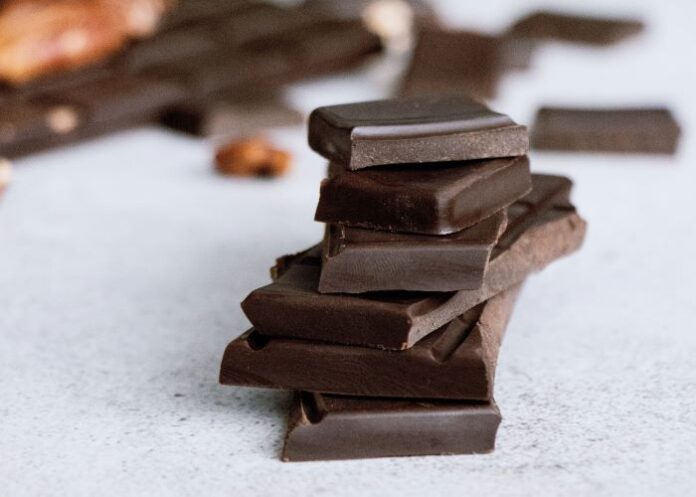Scientists say some brands of dark chocolate, often punted as a rich source of antioxidants that might improve heart health and other conditions, with relatively low sugar levels, contains lead and cadmium, two heavy metals linked to various health problems in children and adults.
Medpage Consumer Report’s scientists recently measured the amount of heavy metals in a number of dark chocolate bars (28 in total), and detected cadmium and lead in all of them. While a number of the chocolates are unavailable in South Africa, except for the popular Swiss chocolate Lindt, others, like American brand Hershey’s, are well known.
Samples tested also included Trader Joe’s, Beyond Good, Ghirardelli, Lily’s and Godiva, as well as several other lessor brands.
The scientists found that for 23 of the bars tested, eating just 28g daily would put an adult over a level public health authorities say might be harmful for at least one of those heavy metals. Five of the bars were above those levels for both cadmium and lead.
Consistent, long-term exposure to even small amounts of heavy metals can lead to health problems. The danger is greatest for pregnant women and children because the metals can cause developmental problems, affect brain development, and lead to lower IQ, said Tunde Akinleye, the Medpage Consumer Report food safety researcher who led the testing project.
“But there are risks for people of any age,” he says. Frequent exposure to lead in adults, for example, can lead to nervous system problems, hypertension, immune system suppression, kidney damage and reproductive issues. While most people don’t eat chocolate every day, 15% do, according to market research.
Even if you don’t eat a lot of chocolate, lead and cadmium are still a concern. They can also found in other foods, like sweet potatoes, spinach and carrots, and small amounts from multiple sources can add up to dangerous levels.
However, Akinleye added, while most of the chocolate tested had concerning levels of lead, cadmium, or both, five of them were relatively low in both. “That shows it’s possible for companies to make products with lower amounts of heavy metals,” he said.
The researchers used California’s maximum allowable dose level (MADL) for lead (0.5 micrograms) and cadmium (4.1mcg). Their results indicated which products had comparatively higher levels, and are not assessments of whether a product exceeds a legal standard. Those levels were used because there are no federal limits for the amount of lead and cadmium most foods can contain, and the scientists believe California’s levels are the most protective available.
The good part
Dark chocolate’s reputation as a relatively healthy treat stems mostly from the cocoa solids, packed with flavanols – antioxidants linked to improved blood vessel function, reduced inflammation, and lower cholesterol. Dark chocolate is also lower in sugar and higher in fibre than milk chocolate, and contains magnesium and potassium. Unfortunately, cocoa solids are also where the heavy metals, especially cadmium, lurk, making it tricky to balance dark chocolate’s risks and benefits.
It tends to be higher in heavy metals than milk chocolate, probably because of its higher cacao content. There is no official cut-off, but dark chocolates are generally at least 65% cacao by weight, said Michael DiBartolomeis, PhD, a toxicologist and former official at the California Department of Public Health who has researched heavy metals in chocolate.
Try dark chocolates with lower cacao percentages
The experts said when selecting a dark chocolate bar, consumers should opt for a 70% dark chocolate product over an 80% one, for example, or a 65% bar over a 70% one. Although not foolproof, testing suggests cadmium levels increase with the percentage of cacao. (Lead levels don’t seem to be as closely tied to cacao percentage.)
Lindt fans will want to know that in the cadmium tests, the brand’s Excellence Dark Chocolate (70% Cocoa) contained 48% lead and 116% cadmium, and in the lead tests, Lindt Excellence Dark Chocolate (85% Cocoa) contained 166% lead and 80% cadmium.
Consumer_Reports_Test_Methodology_for_Heavy_Metals_in_Chocolate_Bars_-_January_2023
As You Sow article – New Report Details Simple, Safe, and Low-Cost Solutions to Reduce Levels of Lead and Cadmium in Chocolate
Medpage article – Lead and Cadmium Could Be in Your Dark Chocolate (Open access)
See more from MedicalBrief archives:
Why dark chocolate is good for the heart
Some dark chocolates may have health benefits
Cocoa may improve walking in people with peripheral artery disease — small study
Cognitive performance and cocoa flavanols – research review

